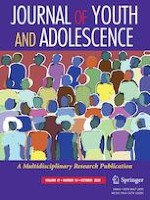29-08-2020 | Empirical Research
Longitudinal Relations between Bullying Perpetration, Sexual Harassment, Homophobic Taunting, and Dating Violence: Evidence of Heterotypic Continuity
Gepubliceerd in: Journal of Youth and Adolescence | Uitgave 10/2020
Log in om toegang te krijgenAbstract
Although evidence suggests that the perpetration of bullying, sexual harassment, homophobic taunting, and dating violence co-occur, there is a dearth of longitudinal research that considers these four forms of interpersonal aggression together. Using a developmental cascade model, the current study examined the longitudinal development of aggressive and controlling behavior over time and the moderating role of gender beginning in pre-adolescence to the transition to young adulthood. Data were from a sample of 608 Canadian adolescents (55% girls/women; 64% white) assessed annually from age 10 (Grade 5) to age 19 using self-reports. Bullying perpetration was stable across adolescence and predicted the perpetration of sexual harassment, homophobic taunting, and dating violence at age 19. No gender differences were found. The findings support a model of heterotypic continuity, whereby stability in bullying beginning in pre-adolescence is related to involvement in multiple forms of aggression in young adulthood; aggression changes as individuals develop.
